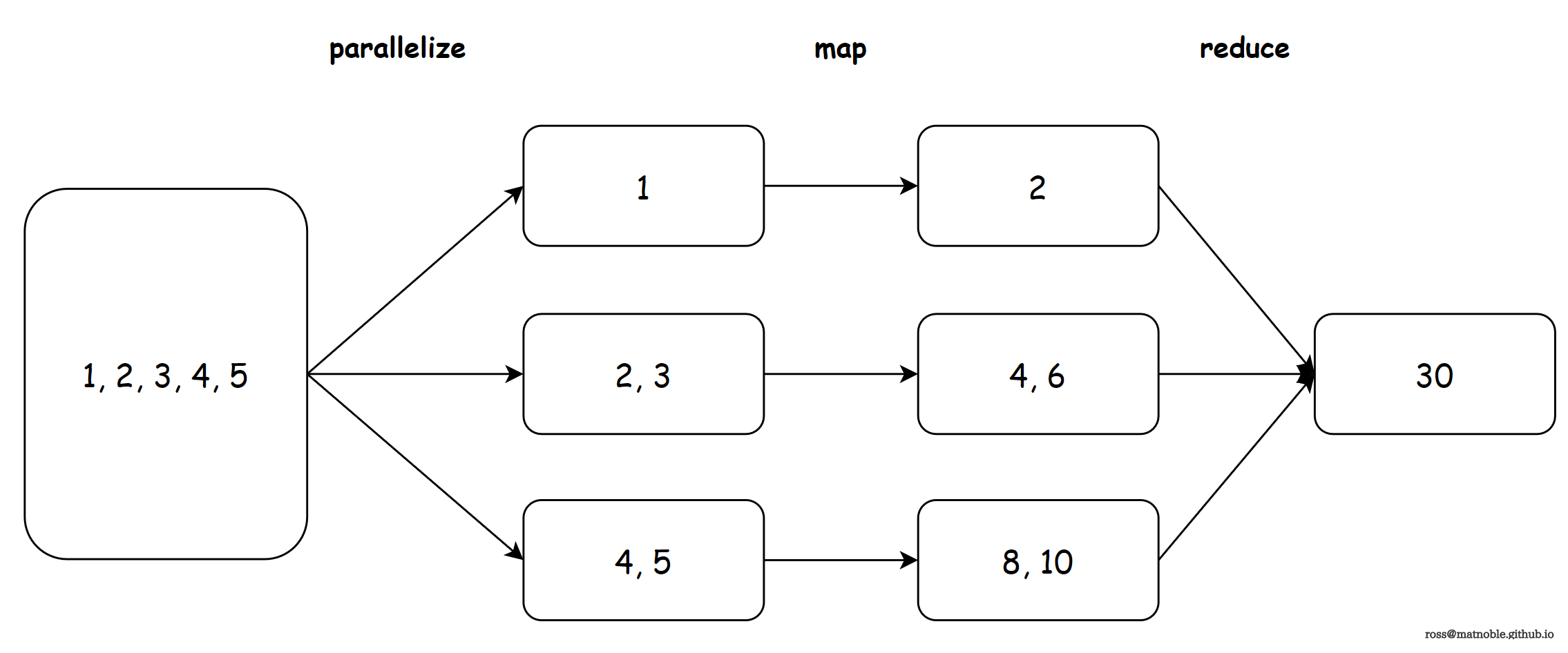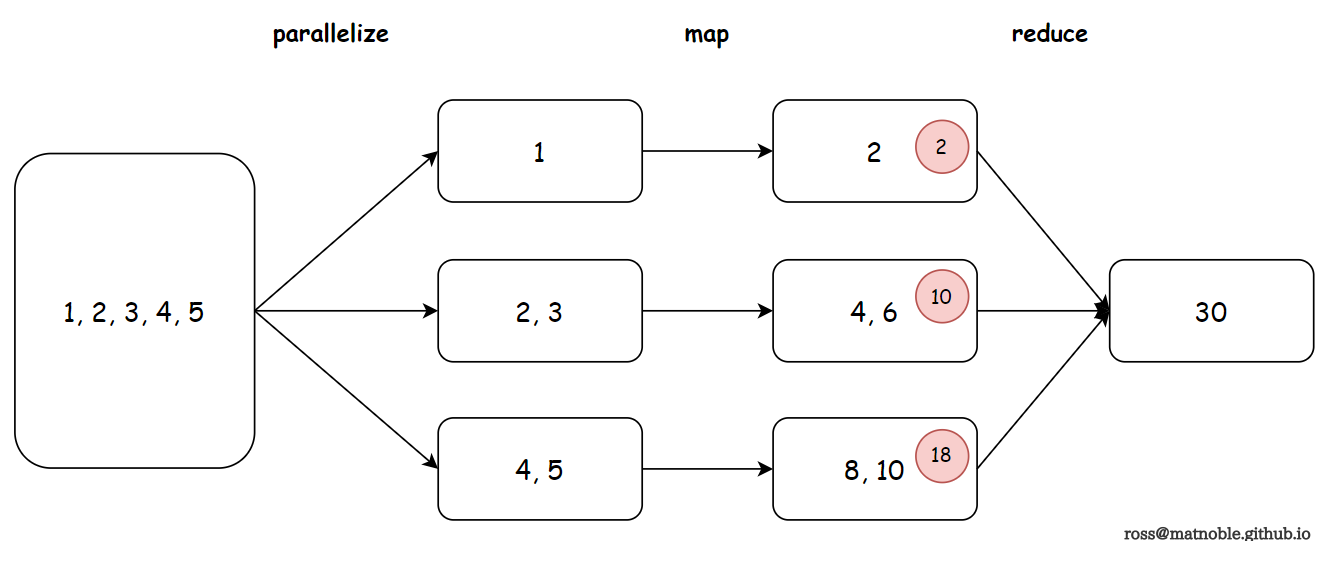MapReduce is a framework for processing parallelizable problems across large datasets using a large number of computers (nodes), collectively referred to as a cluster.
使用下面的示例来简单理解下 MapReduce 的核心思想:
目标:将数据整体乘 2 后,再相加
为了理解 MapReduce 思想,就不要想先加起来,再乘以 2 的方法了~
parallelize方法将大任务分解成小任务,分发给 3 个工作节点map方法将每个节点上的数据进行相同的加工(每个数都乘以 2)reduce方法将加工后的数据全部加起来返回
 ◎ MapReduce
◎ MapReduce
对应 Python 代码如下
# -*- coding: utf-8 -*-
from pyspark import SparkContext, SparkConf
if __name__ == '__main__':
conf = SparkConf().setAppName("map_reduce").setMaster("local[*]")
sc = SparkContext(conf=conf)
list = [1, 2, 3, 4, 5]
list_rdd = sc.parallelize(list, 3).cache()
print(list_rdd.glom().collect())
map_rdd = list_rdd.map(lambda x: x * 2).cache()
print(map_rdd.glom().collect())
reduce_rdd = map_rdd.reduce(lambda x, y: x + y)
print(reduce_rdd)
sc.stop()
[[1], [2, 3], [4, 5]]
[[2], [4, 6], [8, 10]]
30
以上计算过程中, map 阶段分布式地将所有数据都乘以 2,然后 reduce 阶段将所有结果相加. 但似乎还可以继续优化, 将每个工作节点上的数据先相加起来, 再丢给 reduce 做相加计算, 会更充分地利用分布式的特性
 ◎ 预聚合
◎ 预聚合
具体实现时, 将 reduce 替换为 aggregate 即可
reduce_rdd = map_rdd \
.aggregate(0, lambda x, y: x + y, lambda x, y: x + y)
本文使用了 3 种基本算子:
| 算子名称 | 基本用法 |
|---|---|
| map(func) | 映射,接收一个函数 |
| reduce(func) | 聚合,接收一个函数 |
| aggregate(zeroValue, seqOp, combOp) | zeroValue:初始值 seqOp:分区内聚合 combOp: 分区间聚合 |